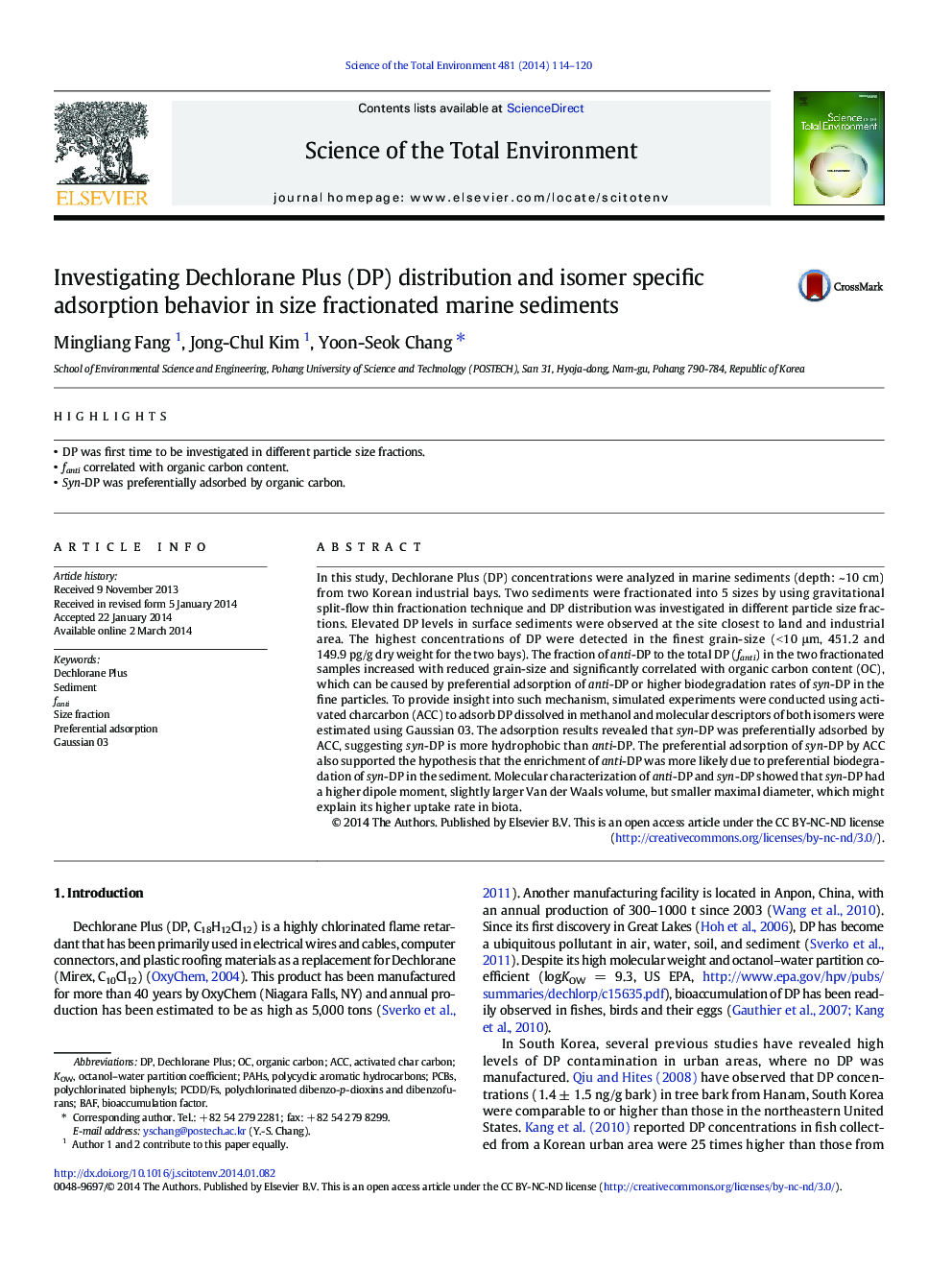| کد مقاله | کد نشریه | سال انتشار | مقاله انگلیسی | نسخه تمام متن |
|---|---|---|---|---|
| 6330838 | 1619786 | 2014 | 7 صفحه PDF | دانلود رایگان |
عنوان انگلیسی مقاله ISI
Investigating Dechlorane Plus (DP) distribution and isomer specific adsorption behavior in size fractionated marine sediments
دانلود مقاله + سفارش ترجمه
دانلود مقاله ISI انگلیسی
رایگان برای ایرانیان
کلمات کلیدی
ACCGAUSSIAN 03PCBsBAFPolychlorinated dibenzo-p-dioxins and dibenzofurans - dibenzo-p-dioxins و dibenzofurans پلی کربناتPCDD/Fs - PCDD / FsPolychlorinated biphenyls - بیفنیل پلیکلر Preferential adsorption - جذب ترجیحیDechlorane Plus - دکلوران پلاسSediment - رسوبoctanol–water partition coefficient - ضریب تقسیم آب اکتانولbioaccumulation factor - فاکتور ذخیره زیستیPolycyclic aromatic hydrocarbons - هیدروکربن آروماتیک چندحلقهایPAHs - هیدروکربن های آروماتیک چند حلقه ایOrganic carbon - کربن آلیSize fraction - کسر حجمیKow - کوه
موضوعات مرتبط
علوم زیستی و بیوفناوری
علوم محیط زیست
شیمی زیست محیطی
پیش نمایش صفحه اول مقاله

چکیده انگلیسی
In this study, Dechlorane Plus (DP) concentrations were analyzed in marine sediments (depth: ~ 10 cm) from two Korean industrial bays. Two sediments were fractionated into 5 sizes by using gravitational split-flow thin fractionation technique and DP distribution was investigated in different particle size fractions. Elevated DP levels in surface sediments were observed at the site closest to land and industrial area. The highest concentrations of DP were detected in the finest grain-size (< 10 μm, 451.2 and 149.9 pg/g dry weight for the two bays). The fraction of anti-DP to the total DP (fanti) in the two fractionated samples increased with reduced grain-size and significantly correlated with organic carbon content (OC), which can be caused by preferential adsorption of anti-DP or higher biodegradation rates of syn-DP in the fine particles. To provide insight into such mechanism, simulated experiments were conducted using activated charcarbon (ACC) to adsorb DP dissolved in methanol and molecular descriptors of both isomers were estimated using Gaussian 03. The adsorption results revealed that syn-DP was preferentially adsorbed by ACC, suggesting syn-DP is more hydrophobic than anti-DP. The preferential adsorption of syn-DP by ACC also supported the hypothesis that the enrichment of anti-DP was more likely due to preferential biodegradation of syn-DP in the sediment. Molecular characterization of anti-DP and syn-DP showed that syn-DP had a higher dipole moment, slightly larger Van der Waals volume, but smaller maximal diameter, which might explain its higher uptake rate in biota.
ناشر
Database: Elsevier - ScienceDirect (ساینس دایرکت)
Journal: Science of The Total Environment - Volume 481, 15 May 2014, Pages 114-120
Journal: Science of The Total Environment - Volume 481, 15 May 2014, Pages 114-120
نویسندگان
Mingliang Fang, Jong-Chul Kim, Yoon-Seok Chang,